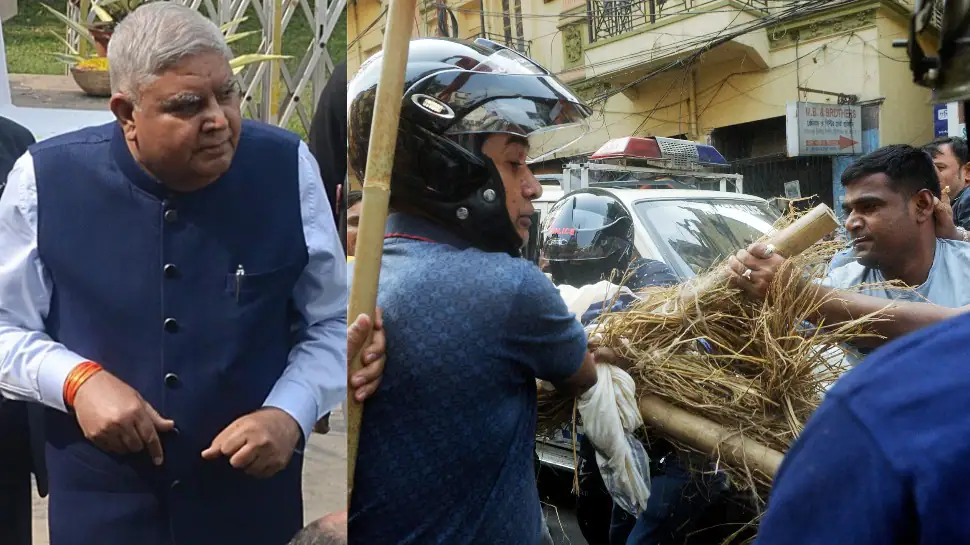
In an exclusive interview with ETAuto, David Slump, CEO and president of Marelli talks about the company’s strategy to boost its presence in the country with a strong emphasis on local supply chain, production and hiring of employees. Excerpt:
Q1: Can you explain how Marelli is adapting to the trends of software-defined vehicles and electrification, given your background in lighting and gears?
We are not just adapting; we are leading. The buzz around software-defined vehicles is about merging vehicle architecture with electronics and software. Marelli already has more ECUs in cars than most, even in areas like lighting, which now has its own ECU.
Today, a car might have 100 computers, but soon it could have 500, enabling hardware-software separation. The software-defined vehicle concept is shifting—software used to follow hardware, but now the user experience defines the hardware. This allows for over-the-air updates, and Marelli is already taking steps in this direction due to our expertise in embedded software across domains like lighting and transmission.
Additionally, we license software for those needing a software factory. We’re leading this trend, especially with partners like Stellantis and Geely.
Q2: Are you working with OEMs in India, or planning any collaborations here?
We are open to working with Indian OEMs, though the demand for software-defined vehicles here is not as high as in other regions due to less electrification and a focus on cost. The second major trend is electrification, which is easier to implement in EVs. Globally, we partner with companies to help them transition at different speeds. In India, the market is still evolving, but there’s immense potential.
Q3: How is the Indian market evolving for Marelli’s magnetic memory, and how are you increasing vehicle content?
Three major industry trends are shaping the market: electrification, the shift to software-defined vehicles, and the current inventory disruption. India is now the third-largest automotive market, after China and the US, and holds tremendous potential.
We are investing in local engineering and manufacturing to capitalise on this. Like we did in China, we’re developing a local supply chain to reduce dependence on imports, and we’re working closely with customers like Maruti Suzuki to localise further.
Q4: What kind of investments and collaborations are you planning with tier-one and tier-two suppliers in India?
Our first focus is on developing our R&D and engineering capabilities in India. We have doubled our engineering capacity in the last two years and plan to double it again. Two years ago, we had about 300 employees; now, we have around 800, and we aim to reach 1,600 in the next two years.
Q5: In what areas will these engineers be working?
The software-defined vehicle is blurring the lines between divisions. Our engineers will work on lighting, propulsion, electronics, and validation in mechanical, software, and hardware domains. What sets Marelli apart is our ability to bring multiple components—like lighting, propulsion, and electronics—onto a single hardware platform. We already have proven algorithms for individual ECUs, and our strength lies in consolidating them.
Q6: What are your plans for manufacturing expansion in India?
We plan to more than double our manufacturing capacity with four new plants in the coming years. These plants will be located near automotive hubs, focusing on lighting, propulsion, ride dynamics, and potentially suspension and displays.
The goal is to localise production, especially for displays, as the Indian government has imposed duties on imports. India is becoming a hedge for global supply chains, especially as tensions around Chinese imports increase.
Q7: Are you looking for joint ventures or acquisitions in India?
We are currently focused on organic growth, doubling our engineering and manufacturing capacities. However, we are open to partnerships and collaboration with local tier-two and tier-three suppliers as we localise our operations further.
Q8: How do you see trends in lighting and displays, especially for the Indian market?
The demand is driven by user experience and design. Lighting is now seen as a brand signature for OEMs, and displays are becoming central to that experience. For example, we’re working on pillar-to-pillar displays for BMW and other high-end customers, but we’re also focusing on affordable solutions for the Indian market.
In India, where sunlight is intense, we have developed technologies that maintain display brightness without overheating, crucial for EVs. We’re co-creating solutions with Indian customers to bring these innovations here first, and then scale globally.
Q9: How are you addressing the shift towards affordability in electrification and software-defined vehicles?
We have introduced a “Lean, Pro, and Elite” product architecture. The lean products focus on affordability, reducing costs and parts by 50%. For example, our Lean Light in China cut costs by 50% and cycle time by 50%. Now, we want India to be the hub for lean innovation, creating affordable yet advanced solutions for both the local and global markets.
Q10: What investments are you making to meet the demands of the Indian market, especially with changing government regulations?
We are working with OEMs on flex-fuel systems and gasoline technologies like GDI to meet new emission norms. We are also receiving government support, particularly in SEZs, but we treat government funding like our own money. We focus on what we need to do, and if the government aligns with our plans, that is great.
Q11: Can you share Marelli’s revenue projections for the Indian market?
We are on track to hit USD 1 billion in India by 2026 and aim to reach USD 2 billion faster than it took to get to USD 1 billion. We are currently growing at around 16%, which is four times the vehicle production market’s growth rate.
Q12: How are you navigating the complexities of electrification in India, given the country’s multiple fuel transitions?
India’s transition to EVs will be slower, and we see this as an opportunity. We are focusing on the long tail of combustion and hybrid markets, particularly in Brazil and India. We are localising flex-fuel and hybrid technologies to stay ahead in regions where EV adoption will be slower.

















